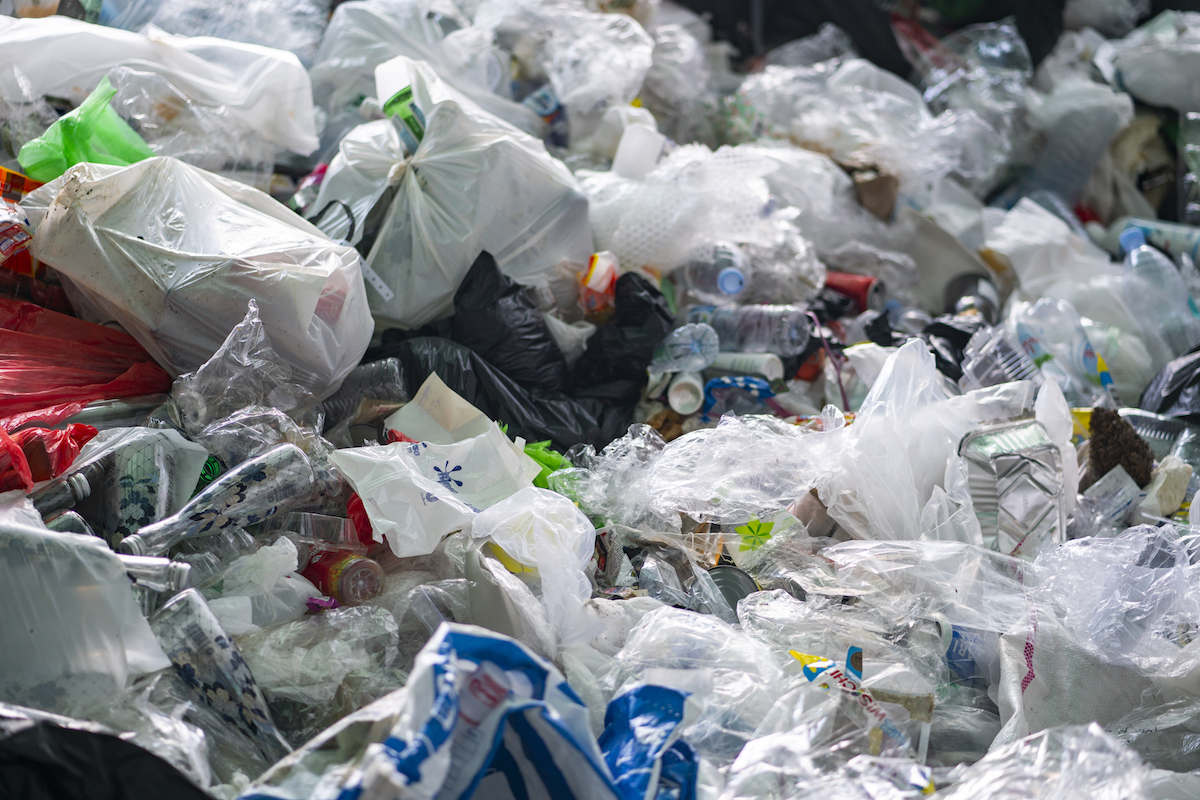Why We (Still) Need Recycling
Published by Ocean Conservancy
This past August I left the bustle of Washington, D.C., for Erie, Pennsylvania, where my husband took a teaching position at Penn State’s campus there. I was excited to experience life on the Great Lakes and, in some ways, to feel even more connected to Ocean Conservancy’s mission. After all, with its sandy shores, high winds and crashing waves, Lake Erie feels a lot like our ocean. My first time there, I strolled along the water and plucked faded candy wrappers, broken straws and countless bottle caps from the sand—all usual suspects that volunteers collect at International Coastal Cleanup events all around the world.
It felt like a beach, and the ocean plastic crisis was now in my backyard—in more ways than one. I quickly learned that Erie’s county recycling program had taken a serious hit. As of earlier this year, they were no longer accepting many of the items I would normally toss into the blue bin back in D.C.—cartons, plastic containers and glass, to name a few.
I was devastated, but not surprised. Working on our Trash Free Seas® program, I knew it had been a tough few years for the recycling industry. In 2017, China announced that starting January 1, 2018, it would no longer import 24 different types of recyclables, plunging the world recycling market into chaos. Suddenly, one of the biggest consumers of recycled waste was shutting its doors and, as we wrote last year, the consequences were felt almost immediately, including in the United States. Journalists began reporting on the bales and bales of recyclable materials going to landfills or stockpiling in warehouses across the country. The Atlantic asked, “Is this the end of recycling?” NPR’s Planet Money wondered, “So, should we recycle?”
In my new hometown of Erie (and in many places like it around the United States) navigating this new recycling reality can be frustrating and confusing. But the answer to “should we recycle?” is still an emphatic “yes.”


As our longtime partners at Keep America Beautiful point out, recycling reduces our dependence on petroleum (which is used to make plastic) and other nonrenewable resources (like metals). Because it takes less energy to recycle a material than to extract it and process it in the first place, recycling can also reduce greenhouse gas emissions. This is especially critical for the health of our ocean given that our ocean is on the front lines of climate change.
Of course, “reduce” and “reuse” are absolutely critical sustainability measures we should all strive for. But the truth is that sooner or later, everything has a shelf life, and we need to make sure we can collect and recycle items that can no longer be reused. In that way, recycling is a critical part of building a circular economy, where nothing—whether it’s a water bottle or plastic car parts—ever becomes “waste,” but rather becomes “material.”
That’s good news for our ocean because while “waste” ends up leaking into the ocean, valuable “material” usually doesn’t—because it’s actively collected. That’s why Ocean Conservancy has invested considerable effort in figuring out ways to improve waste collection and recycling in parts of the world that need it most.
As our CEO wrote earlier this year, there is no doubt that the current recycling system is broken; but if we want to see a clean, healthy ocean—and planet—we need to invest in this system rather than let it fade. That’s why today, on America Recycles Day, I am taking the #BeRecycled pledge to:
- Learn what materials are collected for recycling in my community;
- Reduce the amount of waste I produce, recycle more and buy products made with recycled content; and
- Encourage one family member or one friend to take the #BeRecycled pledge.
Join me!
Love our ocean?
Sign up for our emails!
The post Why We (Still) Need Recycling appeared first on Ocean Conservancy.
Read the full article at: https://oceanconservancy.org/blog/2019/11/15/need-fight-recycling/



